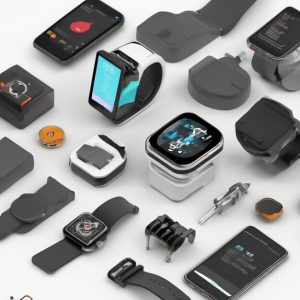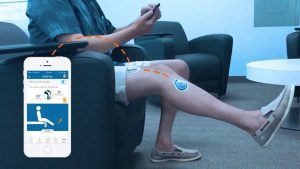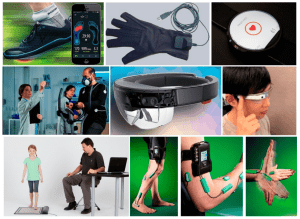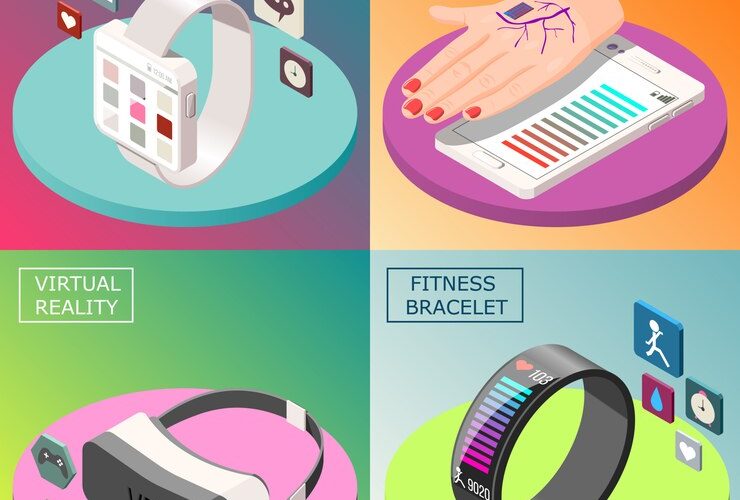Introduction
In recent years, the integration of technology into our daily lives has become increasingly prevalent, particularly in healthcare. Wearable devices—gadgets designed to be worn on the body—are revolutionizing health tracking by monitoring various activities and physiological parameters. From smartwatches to fitness trackers, these devices are reshaping how we approach personal health, biomedical research, and clinical care. This article explores the significant functions of wearable devices in health, their benefits, challenges, and implications for digital health.
The Promise of Wearable Devices in Healthcare

Enhancing Personal Health Practices
Wearable devices enable users to actively engage in their health management by tracking their daily activities and physiological metrics. By collecting real-time data, wearables can assist individuals in monitoring their fitness levels, heart rates, sleep patterns, and more. This empowers users to make informed decisions about their health and wellness.
Example: The Fitbit is one of the most popular fitness trackers available, allowing users to monitor their physical activity, calorie intake, and sleep patterns. By analyzing this data, users can set personal health goals, track their progress, and stay motivated.
Contributions to Biomedical Research
Wearable devices also play a crucial role in biomedical research by providing continuous data collection. This real-time data helps researchers understand health trends and patterns within diverse populations. By analyzing data from wearables, researchers can identify correlations between lifestyle choices and health outcomes, ultimately leading to better prevention and treatment strategies.
Example: During the COVID-19 pandemic, several studies utilized wearable devices to monitor symptoms and track the spread of the virus. Devices like the Oura Ring measured body temperature, heart rate, and sleep patterns, contributing valuable data for understanding the virus’s effects on different individuals.
Facilitating Clinical Care
In clinical settings, wearable technology enhances patient care through remote monitoring and telehealth solutions. These devices allow healthcare professionals to monitor patients’ conditions in real time, making it easier to manage chronic diseases and respond promptly to changes in health status.
Example: The Apple Watch features an ECG app that allows users to record their heart rhythm and detect irregularities. Healthcare providers can access this data, enabling them to identify potential issues early and intervene if necessary.
Key Functions of Wearable Devices in Health

Wearable devices serve several vital functions in the healthcare context, each contributing to the advancement of digital health.
1. Monitoring
The primary function of wearable technology is monitoring. These devices collect continuous data on various physiological metrics, making them ideal for tracking health status over time. Wearables equipped with sensors can measure heart rate, oxygen saturation, physical activity, and more.
Benefits:
- Continuous data collection for timely interventions.
- Enhanced remote monitoring capabilities for patients at risk.
2. Screening
Wearable devices can be used for screening purposes, identifying potential health issues before they escalate. By analyzing data patterns, these devices can alert users to abnormal readings that may indicate underlying health conditions.
Example: The Samsung Galaxy Watch can monitor blood pressure and detect irregular heartbeats, helping users identify potential cardiovascular issues early.
3. Detection
Wearable devices are instrumental in the detection of health conditions. Through advanced algorithms and data analysis, these devices can recognize patterns associated with various health conditions, allowing for timely intervention.
Benefits:
- Early detection of conditions can significantly improve health outcomes.
- Continuous monitoring reduces the need for frequent medical visits.
4. Prediction
Predictive analytics powered by wearable technology can forecast potential health issues based on collected data. By identifying trends and changes in health metrics, wearables can help users anticipate health challenges and take proactive measures.
Example: Research using data from wearables has demonstrated the ability to predict asthma attacks by monitoring respiratory rates and environmental factors, allowing individuals to manage their conditions more effectively.
Technical and Ethical Challenges

While the benefits of wearable devices in healthcare are numerous, they also present various technical and ethical challenges.
Data Quality
One of the primary concerns surrounding wearable devices is data quality. Variability in sensors and measurement techniques can lead to inconsistencies in the data collected. Accurate and reliable data is crucial for scientific claims and clinical decisions.
Solution: To address these concerns, regulations should ensure that wearables meet clinical validity standards. By establishing common standards for data quality, researchers and healthcare providers can rely on wearable technology as a trustworthy source of information.
Privacy and Security
As wearable devices collect sensitive health data, privacy and security concerns arise. Users must trust that their data is handled securely and not misused by corporations or third parties.
Solution: Implementing robust security measures, such as encryption and transparent data-sharing policies, can help protect users’ privacy. Additionally, educating users about their data rights and providing clear guidelines can foster trust in wearable technology.
Health Equity
The benefits of wearable technology are not equally accessible to all individuals. People with higher digital literacy and socioeconomic resources are often better positioned to take advantage of these tools, leading to disparities in health outcomes.
Solution: Public health campaigns should focus on increasing access to wearable devices for underserved populations. Providing education and resources can help bridge the gap and promote health equity.
Ethical Considerations
The use of wearable technology in health raises ethical questions about surveillance and consent. Users may feel monitored or pressured to conform to certain health standards, leading to anxiety and stress.
Solution: Clear communication about the purpose and limitations of wearable technology is essential. Users should have control over their data and be fully informed about how it will be used.
Recommendations for Improving Wearable Device Applications

To maximize the benefits of wearable devices while addressing their challenges, several recommendations can be implemented.
1. Establishing Local Standards for Data Quality
Developing local standards for wearable data quality can help overcome variability issues. Collaborative efforts among researchers, healthcare providers, and industry leaders can lead to guidelines that ensure the reliability of data collected by wearables.
2. Promoting Interoperability
Interoperability among wearable devices and other health data systems is essential for effective data integration. By ensuring that wearable data can be easily shared and compared across platforms, healthcare providers can make more informed decisions.
3. Fostering Health Equity
Public health initiatives should prioritize expanding access to wearable technology, particularly in marginalized communities. By offering education and resources, individuals can better understand and utilize wearable devices to improve their health.
4. Enhancing User Education
Educating users about the capabilities and limitations of wearable devices can empower them to make informed health decisions. Providing clear information about data interpretation and usage can alleviate anxiety and promote trust in the technology.
5. Advocating for Ethical Standards
Establishing ethical guidelines for the use of wearable technology in healthcare is crucial. These standards should address privacy, consent, and the equitable distribution of technology, ensuring that all users are treated fairly.
Conclusion
Wearable devices have the potential to transform healthcare by enhancing personal health practices, contributing to biomedical research, and facilitating clinical care. Despite the technical and ethical challenges they present, the benefits of these devices are significant. By addressing issues related to data quality, privacy, health equity, and ethics, stakeholders can harness the power of wearable technology to improve digital health outcomes for all individuals.
As we continue to navigate the evolving landscape of digital health, wearable devices will undoubtedly play a central role in shaping the future of personalized and preventive medicine. Through collaboration and innovation, we can unlock the full potential of wearables and create a healthier, more equitable world.












